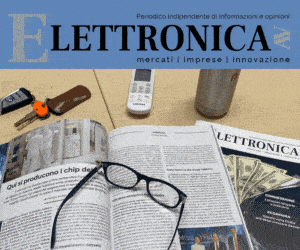by Virna Bottarelli |
The electronics sector is one of the key factors in Industry 4.0, because it is the development of increasingly advanced electronic components that has set it on its path. As Gianfranco Cardamone, Country Manager Italy of Nxp "Industry 4.0 has been driven by the rapid evolution of several characteristics of electronic components: cost, reliability, robustness, energy consumption, integration, performance, to name but a few. And to the electronics industry, this new phase undoubtedly offers more opportunities than challenges." However, there are new aspects that a semiconductor manufacturer needs to take into account: 'Today it is not enough to be a supplier of Analog Front Ends, but you need to be a supplier of Afe that integrate IP features for connection to microcontrollers or microprocessors, capable of handling Artificial Intelligence. And this implies that you also provide the necessary software tools".
Industry 4.0 according to Nxp
For Nxp, the concept of Industry 4.0 represents theevolution of a strategy that has been followed for decades, given the long history of innovation that has accompanied the three souls of Motorola, Freescale and Philips Semiconductor, from whose merger the Dutch company was born. Yet there is still work to be done to make users understand the opportunities offered by the fourth industrial revolution: "Some of those working in the manufacturing sector still have difficulty in grasping the advantages of digital transformation and transforming them into value for the end customer," comments Cardamone. "The fact is that in order to be realised, the transformation towards Industry 4.0 requires the complete alignment of all players in the business organisation: buyers, designers, marketing and sales must work together to realise solutions that are attractive to the end customer, otherwise the risk is to be overtaken either by competitors or by new players introducing disruptive approaches into traditional business models." So are buyers in the manufacturing sector not yet aware of the new opportunities? "In some cases, when it comes to buying chipsets, they still have a cost-only approach, but they are starting to realise that there are other factors to consider: quality, the innovative aspect, availability and the supplier's ability to help them reduce time-to-market."



















